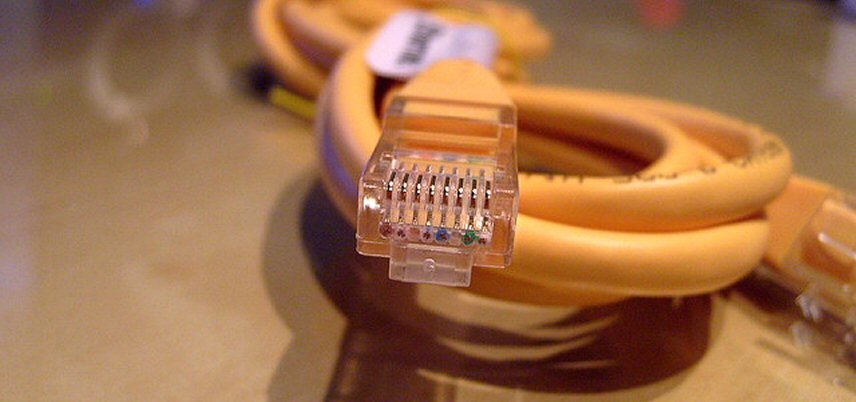Is Ethernet the new wide area network?

Connecting your office networks used to involve choosing between a host of different packet-switching and frame-based technologies that could take data over much longer distances than the internal Ethernet system was capable of. The wide area network (WAN) has traditionally relied on protocols and connection systems like X.25, Frame Relay, ATM, BISDN, FDDI, SONET/SDH and SMDS but all have been fraught with drawbacks. Performance has generally lagged considerably behind internal Ethernet networks, although it has improved as these technologies have developed. However, Ethernet is increasingly offering a viable alternative for a large selection of WAN implementations.
Price vs performance
The issues with existing technologies primarily revolve around the performance they can offer for the money, alongside the complications they introduce to networking topology, which in turn also leads to expensive implementation. For example, the once-popular X.25 protocol, although also packet-based, was different to the Internet Protocol that is now predominant on local area networks, so translation between the two was required. It was also designed to cope with networks that are much more error-prone than modern ones, with an error-correction system that restricted its performance capabilities. Some more recent versions have addressed these issues, although X.25 is still in use for specialist applications.
Frame relay was designed with performance in mind, transferring frames of data rather than the smaller packets of X.25. It is used with T-carrier and E-carrier lines operating at anything from 64Kbits/sec to 400Mbits/sec (in the US) and 565Mbits/sec (in Europe and Japan). The top-end performance has been able to deliver a very usable connection between major branch offices, with the lesser speeds providing adequate provision for smaller branches. But the pricing ramps up considerably, both in terms of the connection rental itself and the hardware required to convert a local Ethernet-based IP network to frame relay over T- or E-carrier.
Above frame relay, ATM over SONET/SDH can deliver higher levels of performance using the cabling of the telephone system. This can provide performance up to 40Gbits/sec using the top OC-768 implementation, but costs millions of dollars a month just for the connection. Like frame relay systems, the price of the equipment to translate the Ethernet IP network to the frame-based ATM on fiber-based SONET/SDH will also be decidedly high. Specialist knowledge will be required to set up and maintain this connection, and conventional knowledge about Ethernet LAN configuration will not be sufficient.
Bandwidth hunger, driven by cloud
So although frame relay and ATM over SONET/SDH have been providing stalwart service and a full range of bandwidth options for company WANs, the price and complexity of both mean that they aren’t the best options for the increasing hunger for inter-office bandwidth. One of the chief driving forces behind this is the private cloud. IDC estimates that private cloud spending will hit $24 billion by 2016, growing at a compound rate of 50 percent per annum until then. Infrastructure, Platform and Software-as-a-Service promise considerable cost benefits, but they require ubiquitous, high-speed connectivity between offices to be effective. This is a necessity for a distributed cloud system to be as seamless as possible for the end user, wherever they are located physically within the company’s range of offices.
However, the rise of the private cloud hasn’t been the only factor driving the need for greater bandwidth. More general use of collaborative applications, requiring shared data, has also been a contributing factor – in particular those involving video conferencing and video streaming, which require lots of bandwidth with the lowest latency possible. Companies have also been consolidating their data centers, so that there is more likelihood that servers, which used to be on the LAN, are now at the end of the WAN connection instead. The latter also increases the need for redundancy, with an even greater requirement for bandwidth between data centers so that they can remain synchronized, backed up and available.
In fact, the bandwidth required by companies has been growing at a rate of over 30 percent year-on-year. But the budget for delivering that bandwidth has only been growing at 10 percent annually. This has meant that a technology providing the same or greater bandwidth than incumbent technologies for considerably less money is a very attractive proposition. This has made alternative WAN technologies look considerably more attractive, in particular Carrier Ethernet. As far back as 2007, in a Current Analysis survey of 120 decision makers, 46 percent of those currently using frame relay WANs planned to switch to Carrier Ethernet, while 61 percent of current ATM users felt the same way. By 2009, 73 percent of companies across all industries had started using Carrier Ethernet in some form.
Another survey by Nemertes Research pinpointed the reasons for the interest in Carrier Ethernet to be the low cost, flexibility, easy management and bandwidth it provides, with 60 percent of those surveyed putting the main emphasis on the level of expenditure. The commodity nature of the interfaces means that Carrier Ethernet wins out in terms of implementation costs, and the ubiquity of expertise in configuring Ethernet networking also means that staff will not need costly specialist training in order to manage an Ethernet WAN.
Quality of service vs. brute performance
Quality of Service (QoS) is always a key consideration with WANs, since they will be required to provide dependable access to mission-critical services. One of the ways Carrier Ethernet can help with this situation is simply by reducing the cost of bandwidth. Thanks to this, companies can ensure QoS by over-specifying the performance of their WAN connections so that they are never too stretched. This is because setting up QoS optimally can be complex, and may not be easy to achieve at the first try. Fortunately, Carrier Ethernet is capable of supporting 100GB bandwidth between sites over 850km (528mi) apart. There are 400GB and 1TB varieties on the roadmap too. So it already surpasses the pinnacle of SONET/SDH’s abilities, with the potential to far exceed its performance in the future, although it is also possible to run Carrier Ethernet over SONET/SDH. In other words, plenty of bandwidth can be made available.
Nevertheless, Carrier Ethernet 2.0 specifies a whole host of technologies that can help answer the Quality of Service question. The Multi-COS capabilities mean different data types can be given varying levels of priority, for example prioritizing voice and video over less latency-sensitive Web data. A service-level agreement can be maintained even when multiple customers share the same cabling infrastructure. Higher levels of bandwidth can be provided on demand up to the interface speed, with no need to change any physical hardware. So if a company finds there is insufficient bandwidth for their WAN needs with their current connectivity plan, an upgrade will be readily available. It’s even possible to shape provisioning dynamically around peaks and troughs in demand, so a business only has to pay for the bandwidth it uses, rather than the maximum it might conceivably require.
Ethernet WAN as a commodity
There are further drivers making the cost of Ethernet as a WAN interconnect increasingly competitive. The arrival of Carrier Ethernet 2.0 has enabled the Ethernet WAN to be provided much more as a commodity. In particular, E-Access allows an Ethernet WAN to stretch across multiple Carrier Ethernet vendors, so that companies won’t be tied to the footprint of a single provider, and can build WAN connections using the services of multiple suppliers. This also makes for easier competition between vendors, since services can be transferred from one to the other without an expensive change of equipment and protocols.
Carrier Ethernet offers a hugely flexible variety of network design options, too. It can be used for simple point-to-point connections via its E-Line flavor, and multipoint-to-multipoint via E-LAN. The latest 2.0 specification allows a multipoint variant called E-Tree where hub nodes can communicate with each other, but users accessing these hubs can’t communicate between themselves. So there are many configurations available for different types of WAN.
Telecom companies spent $70 billion on Carrier Ethernet equipment and services in 2013, and their annual spend is expected to rise to $100 billion by 2017. As a result, Carrier Ethernet is now being installed in more business premises than all other technologies combined. However, the compatibility of Ethernet with existing technologies, including DSL, fiber, and SONET/SDH, means that it can be implemented even when some branches served by the WAN don’t have the necessary Ethernet cabling available yet. So it is safe to implement even when some of your offices are not going to be served by the full provision straight away.
The Ethernet future
The future is looking very bright for companies hoping to extend the utility of their WAN. Where the cost of implementation of a WAN above a certain level was often prohibitive for many companies, due to the expense of traditional technologies, Ethernet now has the potential to bring high performance to a much greater level of affordability. The increasingly competitive market for supplying Carrier Ethernet services can only mean cheaper, higher-quality provisions and more choice. The extra facilities in the latest Carrier Ethernet 2.0 standard will also mean the Ethernet WAN can be provided over a greater distance, so offices over a wider spatial area can be connected. In other words, Ethernet really could be the new wide area network for a huge range of companies.
This article originally appeared on ITProPortal.com.
Connecting your office networks used to involve choosing between a host of different packet-switching and frame-based technologies that could take data over much longer distances than the internal Ethernet system was capable of.
Locked Content
Click on the button below to get access
Unlock NowOr sign in to access all content on Comcast Business Community
Tags
Learn how Comcast Business can help
keep you ready for what's next.










